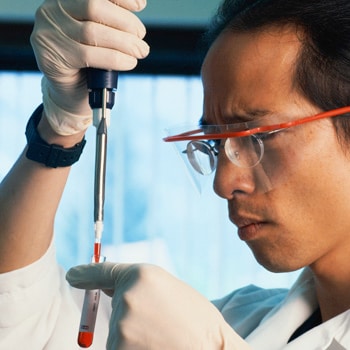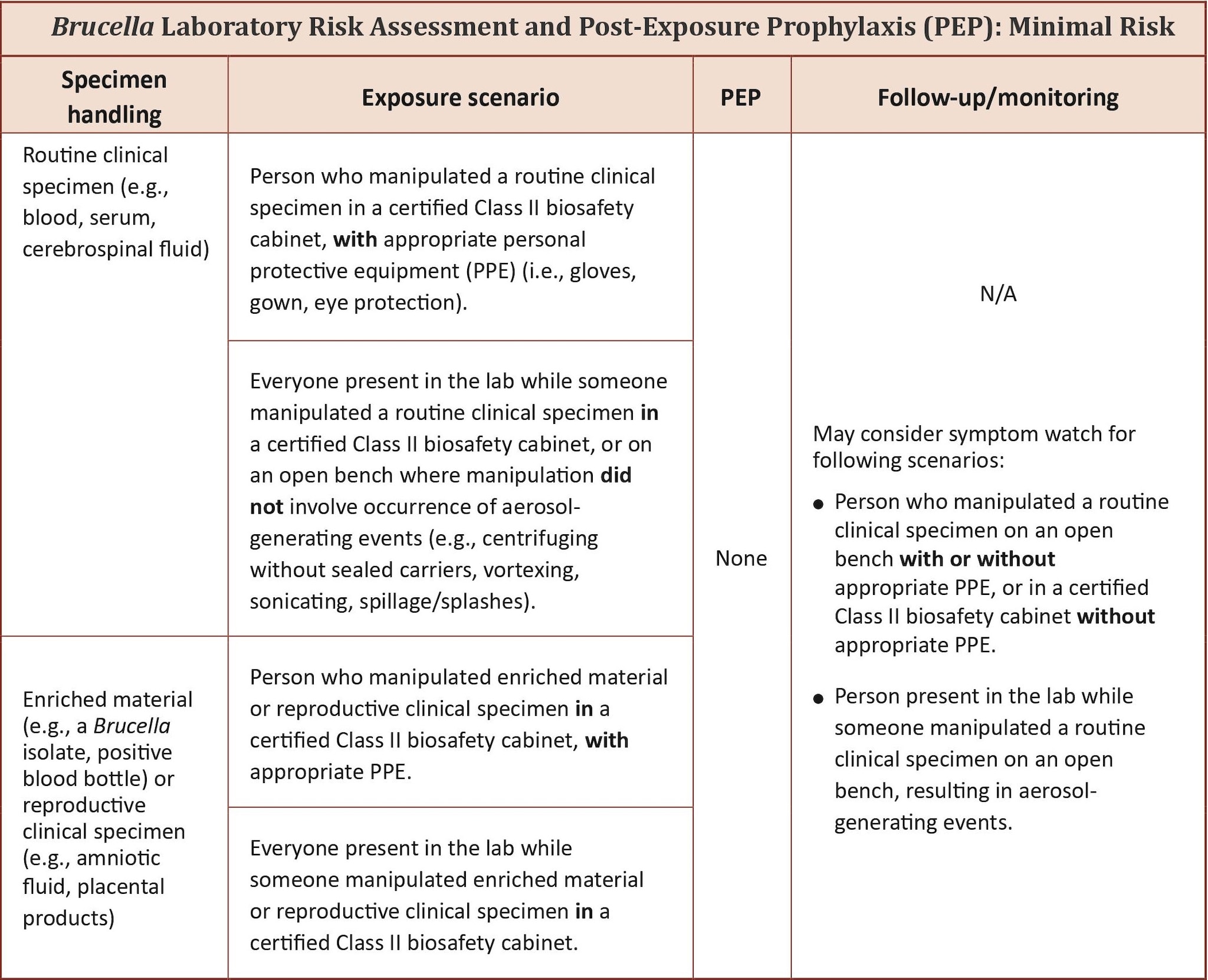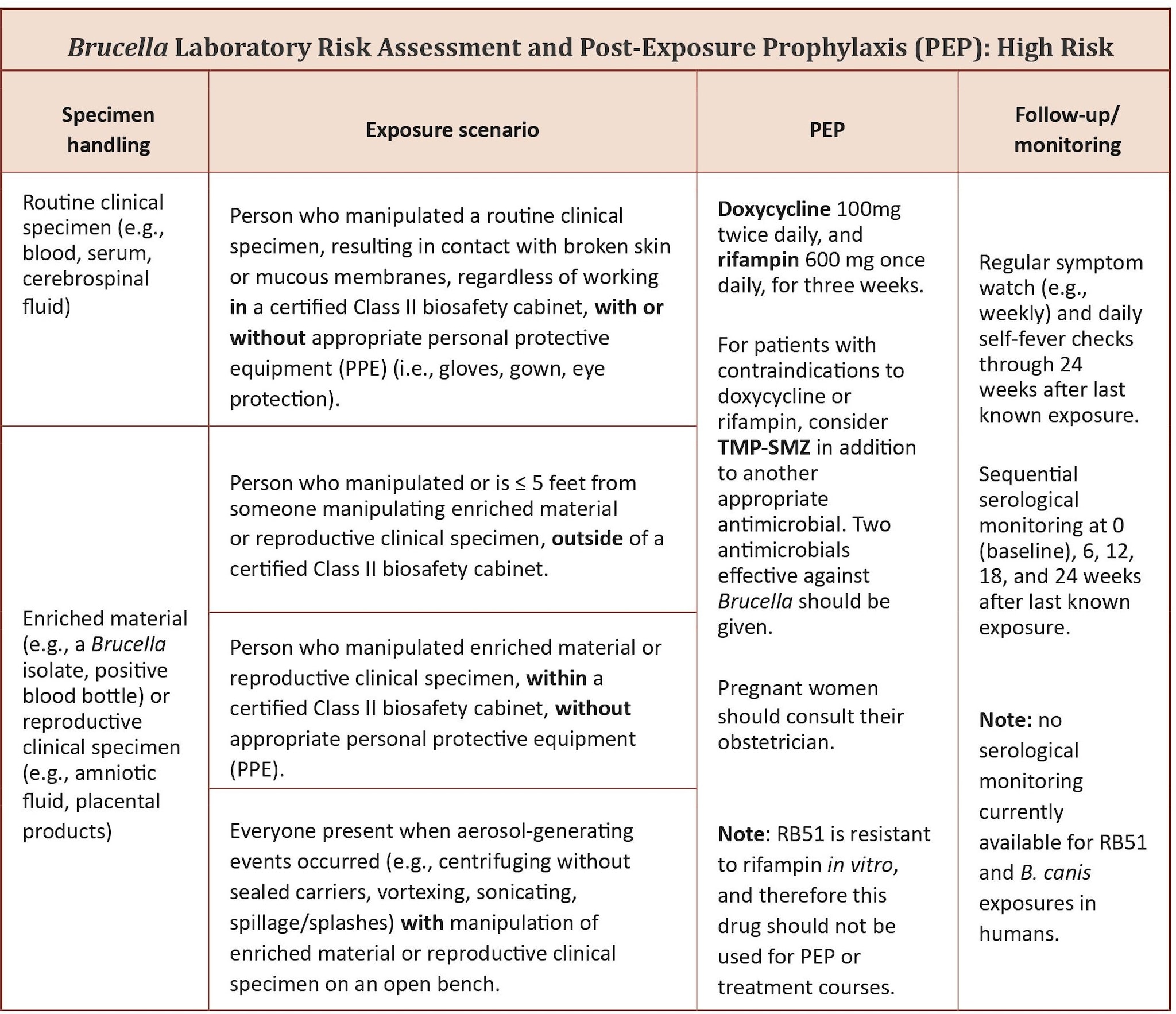What to know
Brucellosis is the most commonly reported laboratory-associated bacterial infection. If you work in a lab, take precautions when handling samples to prevent infection. If you are exposed, determine your risk and follow recommendations for symptom monitoring and possible post-exposure prophylaxis.

Safe laboratory practices
In a laboratory setting, the risk for accidental exposure to Brucella is highest for procedures or manipulations that occur outside the class II biological safety cabinet (BSC) and that have the potential for creating aerosols or splashes, including:
- Pipetting
- Centrifuging
- Grinding
- Blending, shaking, vortexing, and mixing
- Sonicating
- Opening containers of infectious materials
- Containers breaking during transport or manipulation
If an exposure occurs
Once a potential exposure is recognized, determine which activities led to the exposure. Then identify:
- Who was in the laboratory during the suspected time(s) of exposure
- Where they were in relation to the exposure
- Whether surfaces or other materials or equipment are contaminated
Preventing Brucella lab exposure
This chart can help you determine if lab professionals are at minimal, low, or high risk, and how to proceed following a laboratory exposure:



Post-exposure prophylaxis
Workers with high-risk exposures should begin antimicrobial post-exposure prophylaxis (PEP) as soon as possible to prevent Brucella infection. Prophylaxis can begin up to 24 weeks after exposure. PEP is generally not recommended for low-risk exposures, though it may be considered on a case-by-case basis. PEP courses should include a minimum of 21 days of:
- Doxycycline (100 mg) orally twice daily and
- Rifampin (600 mg) once daily
Spotlight
Discuss all PEP regimen and dosing decisions with your healthcare provider, especially if you can't take any of the recommended antibiotics. If you develop clinical symptoms while on the PEP and brucellosis is confirmed, the treatment will likely be extended.
Symptom Surveillance
An occupational health provider should arrange for regular (at least weekly) monitoring for fever or symptoms consistent with brucellosis for all exposed workers. In addition, plan to take your temperature daily for 24 weeks from the last known date of exposure. Be aware of brucellosis symptoms and call your healthcare provider if you develop these symptoms within 6 months of the exposure, even if you've already undergone PEP.
Serological Monitoring
If you had a low-risk or high-risk exposure, you should be tested using quantitative serological testing to detect infection early. Your blood should be drawn and submitted to the same laboratory at 0 (baseline), 6, 12, 18, and 24 weeks after exposure.
CDC's Zoonotic and Select Agent Laboratory (ZSAL) is able to perform serial serological monitoring at no cost. If you use other laboratories, we recommend an agglutination assay to quantify seroconversion.
